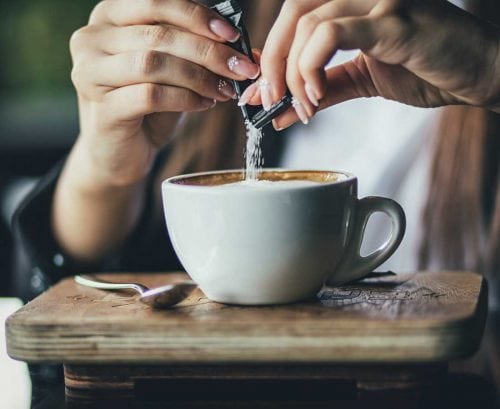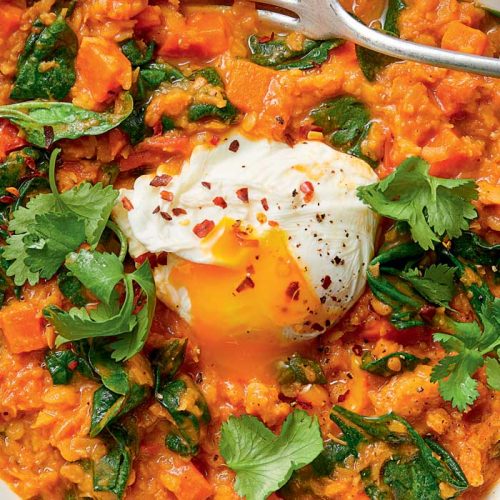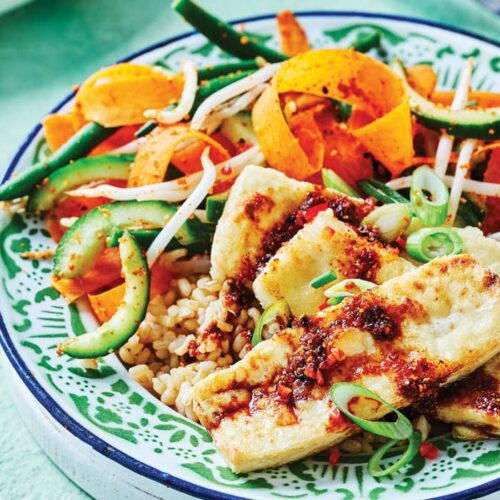
Dietitian Brooke Delfino shares six effective ways to stop sugar cravings for good.
Why do we often fancy something sweet after eating a perfectly satisfying meal? An extra piece of toast with jam after breakfast, a biscuit after lunch, or chocolate, ice-cream and other sweet desserts after dinner. The good news is that sugar cravings can be controlled, according to emerging research. The answer lies in your food choices at main meals, plus tweaking your behaviour around food.
We reveal six strategies for beating those between-meal munchies and sugar cravings, so you can retrain your brain to think about food in a healthier way.
1. Ditch diets
Drastic kilojoule/calorie restriction can fuel cravings for energy-dense foods, and if you give in to these cravings, you can actually encourage future cravings. A well-balanced diet is all about a healthy, maintainable approach, which includes the occasional sweet treat. To learn more about healthy eating and the 80:20 approach, turn to p26.
HFG tip
Change your language around food. Avoid using negative words like ‘bad’ or ‘naughty’ to describe chocolate and sweets. When you remove the guilt around these foods, you’ll enjoy them more and need them less.
2. Reset your hormones
One way your stomach tells your brain it’s full is via the appetite-regulating hormone leptin. Being overweight or obese, however, can make you leptin-resistant. This means those appetite-suppressing signals don’t make it through to your brain, so you feel hungry even if you’re full. Fortunately, changing your diet influences your leptin levels. In fact, studies reveal healthier diets help to ensure your leptin levels work for you, rather than against you.
HFG tip
Plan all your meals and snacks so they include a variety of foods from the five core food groups: fruit, vegies, grains, lean meat and dairy. Need some inspo? Check out our seven-day meal plans.
3. Pump up the volume
It’s easier to manage your appetite between meals if you eat tasty, balanced meals. You’ll feel full for longer if they’re high in fibre, with a good balance of protein, carbs and healthy fats.
If the idea of a salad for lunch leaves you feeling deprived, add tasty ingredients, such as toasted nuts, roasted vegies or crumbled feta, plus a drizzle of olive oil. Soup is another delicious and filling way to eat more fibre-filled veggies.
HFG tip
Fill up half of your plate with a variety of colourful veggies at every meal.
4. Ride the crave wave
Seeing or smelling treat foods may make them irresistible, but this is a short-lived response. To help curb cravings, be aware of this and know that it won’t last — you can override it! Ask yourself whether you’re truly hungry, or if the sweet craving is actually a result of being bored, tired or upset.
HFG tip
To break the habit of finishing every meal with something sweet, cleanse your palate with a peppermint or ginger tea instead. A piece of naturally sweet fresh fruit might also suffice.
5. Be snack savvy
Snacks can make or break a healthy diet. To ensure your snacks don’t defeat your good intentions, stick to minimally processed whole foods and get rid of the biscuits and chocolate stocked in your desk drawer.
Healthy snacks include fresh fruit with a slice of cheese, some raw vegie sticks with a healthy dip like hoummos, a tub of yoghurt or a handful of unsalted nuts. Our high-fibre muesli bars (see p58) are a healthy snack with just enough sweetness!
You can also make healthier swaps for your 3pm pick-me-up, such as a soothing herbal tea instead of sugary biscuits. Aim to include a source of healthy fats, protein or fibre in each mid-meal snack, as these nutrients keep you feeling full.
HFG tip
Stock your fridge and pantry with nut butter, avocados, nuts, wholegrain crackers, raw vegie sticks and fresh fruit for a healthy snack.
6. Know your food triggers
Just thinking about your favourite foods can set in motion a range of physiological responses, as your mouth starts to produce saliva and your stomach prepares for digestion.
Cravings also lead to a surge in the hormone insulin. This then lowers your blood sugar levels, which makes you feel hungry, and you end up thinking you want a certain food even though you don’t actually need it.
HFG tip
When cravings strike, head outside for a short walk or find another quick, easy distraction. If the sweet craving hasn’t passed in 20 minutes, savour a smaller portion so you don’t feel deprived.
Highest food source of sugar
- Fruit juice and fruit drinks: 14%
- Sweets and chocolate: 8%
- Sugar, honey and syrups: 12%
- Soft drinks and sports drinks: 19%
- Cakes, muffins, biscuits and pastries: 14%
The anatomy of a sugar hit
Why does sugar have such an incredible hold on us? Let’s take a high-sugar treat — a jelly snake — and follow what happens when you pop a handful into your mouth:
- The mouth has taste receptors for sweetness, so when we chew on jelly snakes, these receptors register pleasure. Once we swallow, sugar from the lollies travels through the stomach into the small intestine, where it is broken down into fructose
and glucose. - Glucose and fructose are absorbed into the bloodstream. As a result, the pancreas releases insulin, which locks onto cells and acts as a key, allowing glucose to move from the bloodstream into cells, where it is needed for energy. If the sugar (or starch) is digested and absorbed into the blood stream too quickly, you may get a surge of energy from the new supply of glucose to cells all around your body. This is the origin of the term ‘sugar hit’, which is actually a misnomer because starchy foods can have exactly the same effect.
- When glucose hits the brain, you also get a little surge in the production of serotonin, a ‘happy hormone’. As a result, you may feel more mentally alert and experience a boost in mood. Glucose is the preferred fuel for the brain and nervous system, which needs at least 120g of it a day for optimal functioning.
- Continuing on its journey, fructose and any leftover glucose travels into the liver. At this point, fructose is converted into glucose, too. Any glucose that’s not needed straight away gets packaged up into glycogen (lots of glucose molecules stuck together) for storage in the liver and muscles until it’s needed for energy. Once the storage capacity in the liver and muscles is full, extra glucose can be converted to other fuels, such as pyruvate and lactate. A very small amount (less than five per cent under normal conditions) can also be stored as fat in the liver.
- A few hours after you’ve eaten those jelly snakes, your blood glucose levels start to fall again. Now you feel your energy levels dip, and you begin to get tired and hungry. As a result, you look for an energy fix and reach for the next handful of sugary snakes to keep you going.
Article sources and references
- Australian Bureau of Statistics. 2016. Australian Health Survey: Consumption of added sugars, 2011–12. Accessed December 2021https://www.abs.gov.au/ausstats/[email protected]/lookup/4364.0.55.011main+features12011-12#:~:text=4364.0.,of%20added%20sugars%2C%202011%2D12&text=In%202011%2D12%2C%20Australians%20consumed,14%20teaspoons%20of%20white%20sugar).
- Clemens et al. 2016. Functionality of sugars in foods and health. CRFSFS. 15: 433–70.https://ift.onlinelibrary.wiley.com/doi/abs/10.1111/1541-4337.12194
- Sugar Nutrition Resource Centre. 2019. Sugar consumption trends in Australia and NZ. Accessed December 2021https://www.sugarnutritionresource.org/news-articles/sugar-consumption-trends-in-australia-and-nz#:~:text=Median%20added%20sugars%20was%2049g,and%20added%20sugar%20by%20ethnicity.
- Sugar Nutrition Resource Centre. 2021. Digestion, absorption & transport of carbohydrates. Accessed December 2021https://www.sugarnutritionresource.org/the-basics/digestion-absorption-of-sugar
www.healthyfood.com










